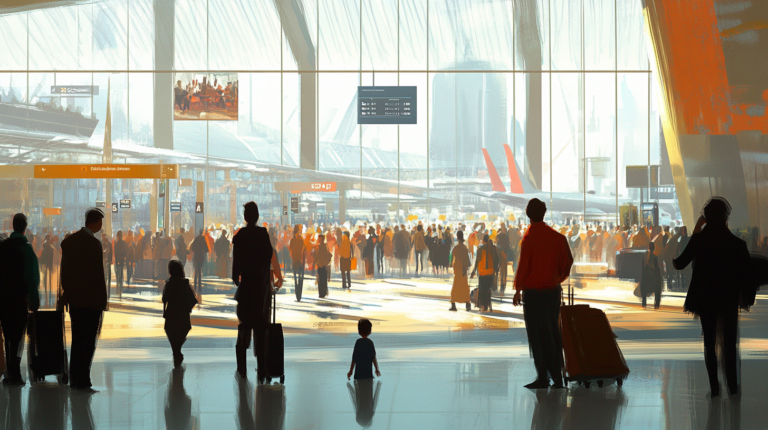Mastering Your Business Travel Budget

Business travel, when approached with a well-defined budget, can be a game-changer for revenue growth and relationship-building. From my own experience trying out various corporate travel strategies, I’ve noticed that a clear financial framework keeps me focused while I’m in the air—or sprinting from a taxi to a boarding gate. By setting precise goals for each trip, I can anticipate expenses, reduce stress, and maximize my frequent-flyer perks. A 2024 survey even backs this up, showing that companies investing more in travel budgeting report significantly higher returns and improved team morale.
Why Frequent Flyers Need a Solid Budget

In my travels, I’ve observed that spreadsheets and preplanned spending categories aren’t just bureaucratic red tape—they’re a form of strategic cushioning. They let me isolate every cost, from tickets to last-minute surcharges, and reconcile them with the trip’s objectives. According to industry data, businesses that systematically review their actual spending versus projected budgets catch hidden expenses early and are better at negotiating vendor rates. Building this kind of travel discipline doesn’t require an enormous finance team; it just takes a bit of foresight and a willingness to refine the budget after each journey.
While traveling for Seat5A, I’ve also seen how a solid budget can bolster relationships with clients or partners. When you’re not stressed about daily allowances or unplanned fees, you can channel all your energy into productive meetings and conferences. Whether flying economy or snagging an upgrade, a clear budget helps maintain financial wellness for both the traveler and the company. It’s a win-win that keeps everyone on track.
Top-Rated Templates That Make Budgeting Easy

Thanks to a wave of user-friendly templates, budgeting no longer involves tedious manual calculations. I’ve experimented with free tools from Google Sheets, Excel, and even Word files, and each comes with preset formulas to handle everything from average hotel costs to rideshare estimates. Many well-known templates from experts—Vertex42, Charlie Marchant, Spreadsheet Daddy, and TheGoodocs—help keep trip expenditures organized in neat categories. They’re especially useful if you find yourself juggling numerous receipts or sifting through credit-card statements for reimbursements.
Even if you have minimal accounting know-how, these ready-made documents let you automate calculations and consolidate trip details in seconds. For instance, when using a Word-based template, I simply fill in the day’s food and travel costs, and the real-time tallies reveal if I’m drifting off budget. I often recommend saving a master copy and making separate versions for each new trip. That way, I can quickly review or compare historical data to optimize future journeys.
Breaking Down Essential Budget Categories

In my own budgeting routine, I always start with flights. Base fares can vary wildly depending on the season, and I personally factor in additional costs like checked bags or seat selection upgrades. These details are critical to capturing an accurate picture of your total travel spend. A recent study suggests that around 20% of unplanned travel costs arise from add-ons, so it pays to track even the smallest fees.
My second line item is lodging. This can include anything from a centrally located hotel to a cozy homestay—whatever option best aligns with the trip’s purpose. I take advantage of loyalty programs religiously, noting any discounted rates or membership perks that could stretch my budget further. Third, I list meals and incidentals, which includes everything from coffee breaks at the airport to dinner meetings. And of course, I keep a careful line for transportation. Whether it’s a company car or rideshare, getting from point A to point B isn’t free.
Finally, I always build in a contingency fund. Frequent flyers know that rebooking or rearranging travel plans at the eleventh hour can be expensive. Setting aside a buffer for unexpected events helps me avoid last-minute financial scramble—something I learned the hard way after a flight cancellation left me stranded with hotel rebooking fees in a busy convention city.
Benefits of Utilizing Corporate Travel Templates

Templates don’t just save time; they can significantly reduce errors. By leveraging automated fields, a once time-intensive process becomes a swift exercise in data entry. I appreciate how these tools can be customized for different policy requirements. When I’m traveling on behalf of a corporate partner, for instance, I tweak the template to reflect separate cost centers, meal allowances, and mileage policies. This approach helps ensure transparency with accounting teams, who rely on precise data to keep the books balanced.
Corporate travel templates can also foster smarter, data-driven decisions. When I see my expenses consistently surpassing certain thresholds—say lodging or ground transportation—I know it’s time to negotiate better rates or adjust my travel pattern. Being able to assess the numbers in real time prevents nasty surprises upon returning from a trip, and it builds trust with colleagues and stakeholders who appreciate the fiscal responsibility.
Getting Started with Your Next Flight in Mind

One of my favorite ways to kick off budget planning is using Jotform‘s online spreadsheets or corporate-friendly Excel files from TheGoodocs. These accessible platforms require virtually no coding skills, allowing me to set up a custom expense tracker in minutes. Even compressed files, like a quick zip-file download, are simple to open with free software such as 7Zip or WinRAR. Once set up, these tools travel just as easily as I do.
Whether I’m flying economy or enjoying a business-class seat, a well-established budgeting system frees me to concentrate on the bigger goals: closing deals, networking effectively, and genuinely enjoying the journey. Templates that automatically sync with mobile apps add another layer of convenience, giving me real-time access to my numbers wherever I roam. This means no more frantic hunts for receipts or second-guessing last night’s dinner tab—it’s all at my fingertips.
Final Thoughts

Establishing and maintaining a reliable business travel budget is more than just sound financial advice; it acts as a roadmap for your entire journey. By breaking down expenses into clear categories and leveraging modern templates, you equip yourself with the knowledge and security to explore new destinations without fretting over unplanned costs. This clarity ensures you can focus on what truly matters—strengthening professional ties, seizing new opportunities, and enjoying the thrill of each flight.
And remember, today’s innovations make budgeting accessible to everyone, from solo entrepreneurs to large corporate teams. If you prioritize accurate tracking upfront, you’ll likely see benefits ripple across your professional growth, client satisfaction, and even personal peace of mind.
Amelia Yeaher’s Take
From my perspective, a solid budget is like an extra layer of confidence you bring on every flight. When you’ve got the numbers on your side, there’s room to be curious, discover new cultures, and maybe even try that edgy local cuisine—without worrying about hidden expenses draining your resources.
To me, budget isn’t a buzzkill; it’s a travel companion that helps turn each trip into a well-orchestrated success. By focusing on transparent cost management, I can more freely embrace the wonders of the skies and the places I visit underneath them.






